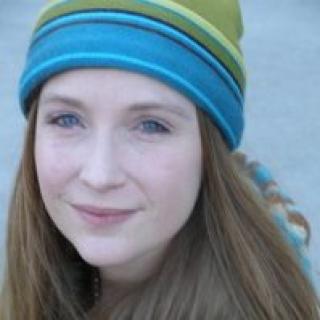This post by Sound Discipline trainer Karen Schrantz is part of our Growing Character series on the value of practice and gratitude.
Enough is as good as a feast.
— Fortune cookie proverb
 My yoga instructor offered an interesting challenge for her class this month: Lighten up. It was not meant to be the typical New Year’s resolution to exercise more and lose a few pounds, but to look at life with more levity. Last week as my family ate dinner at our favorite local Thai restaurant, I shared how the challenge from my yoga instructor to smile more each day has been producing some fun results. As I walk down school hallways at work, I’ve noticed that when I smile at the teenagers, they smile back. School administrators seem to lighten up to. I confessed that it also has taken a bit of thinking, that I’m going to need some practice for this to become easy for me.
My yoga instructor offered an interesting challenge for her class this month: Lighten up. It was not meant to be the typical New Year’s resolution to exercise more and lose a few pounds, but to look at life with more levity. Last week as my family ate dinner at our favorite local Thai restaurant, I shared how the challenge from my yoga instructor to smile more each day has been producing some fun results. As I walk down school hallways at work, I’ve noticed that when I smile at the teenagers, they smile back. School administrators seem to lighten up to. I confessed that it also has taken a bit of thinking, that I’m going to need some practice for this to become easy for me.
Our dinner wrapped up and we opened our fortunes. “What does ‘Enough is as good as a feast’ mean?” inquired my 8-year-old son. That was the beginning of a very interesting family conversation that touched on gratitude, protection of natural resources, healthy eating choices, balance, and Yoda (all topics eventually lead back to Star Wars in our house!). We concluded by agreeing that how you look at things determines your happiness. More is not always better. Having just enough means noticing and appreciating what you do have and not what you lack. “It’s looking at the glass as half full instead of half empty,” I offered. “Oh, that’s just looking at the bright side!” our son replied. “Kids are good at that!”
We’ve all heard news reports on how a positive outlook on life invites better health and happier relationships. But as adults, with all our busyness it’s easy to see the glass half empty; to notice the problem instead of the opportunity. This lack-itude can become an unnoticed, established pattern for our lives. With the responsibility of parenting, it can feel so hard sometimes to get it all done: work, chores, homework, activities. Children often see the world differently and can give us a different perspective.
I still haven’t become an expert at lightening up, but my kids turn out to be great teachers of the art. Here are a couple of examples from our house:
After-dinner chores need to be done.
My response: “Let’s go. Time to get going with jobs. If there’s time, we can have fun after we’re done.”
My child: “Wouldn’t it be fun to turn on some music and see if we can get the chores done before the fifth song? That would be fun now.”
Cold, overcast, rainy day (10th in a row!)
My (internal) voice: “I am so tired of this rain and grey! It’s so depressing! When will the sun come out?”
My child (noticing the grey day): “I love these kinds of days because they are perfect for snuggling, drinking hot cocoa and reading aloud under a blanket. Can we do that today?”
You get the idea. The thing is, the more you practice lightening up, the easier it gets. And lucky for us, we have children as teachers who will continually give us reminders.
Will you join me in practicing? (As my children know, it IS more fun together.)
Observe: Observe your situation from a neutral perspective. E.g. dog needs walking, dishes need washing.
Pick a “lighter” perspective. I’m grateful to have a dog to love. I appreciate that we have just had a family meal together.
Feel: Notice how your body feels when you practice with the new view. Does your face soften or tense? Does your breathing speed up or slow down?
Reflect: Is this new perspective uncomfortable? Unfamiliar? Freeing? Joyful? What has this new perspective opened in others?
And... do it again. That is what practice is. You don’t have to be perfect. Smiling more can be done in each moment. The shift in perspective is sure to bring more joy to your New Year.
About the Author
Karen Schrantz is a certified facilitator for Sound Discipline. She has a master’s degree in public administration from the Evan School of Public Affairs at the University of Washington. A former classroom teacher, she has worked as an education consultant for the past 14 years. She teaches parenting classes in Seattle and Bellevue and lives in West Seattle with her husband, 11-year old daughter and 8-year old son.











